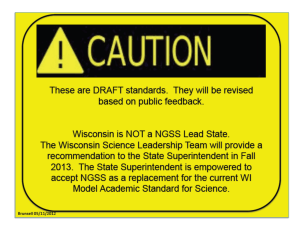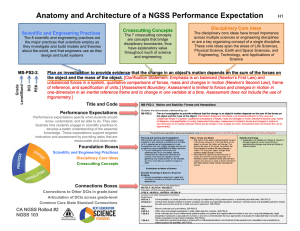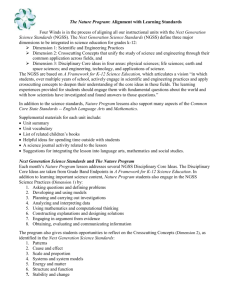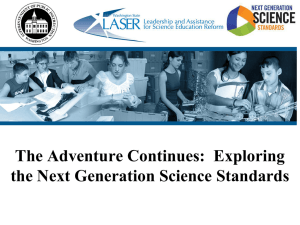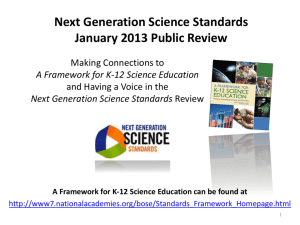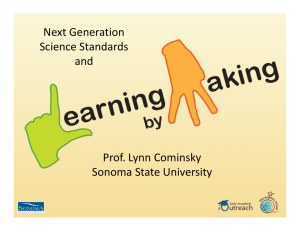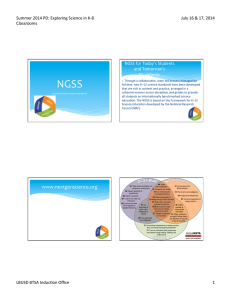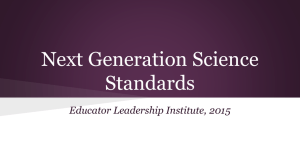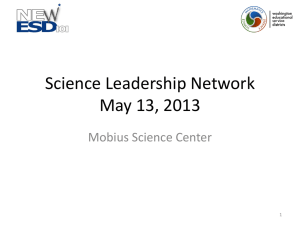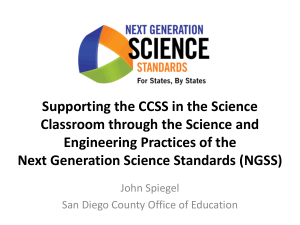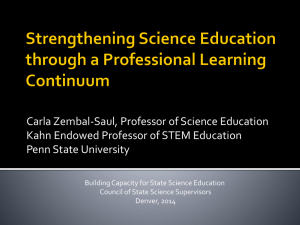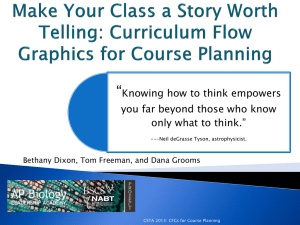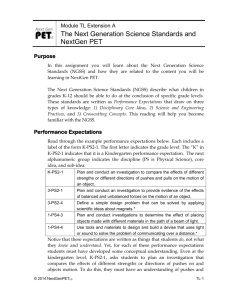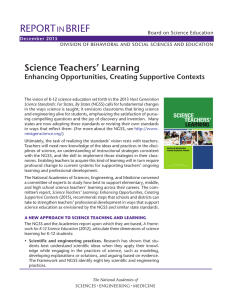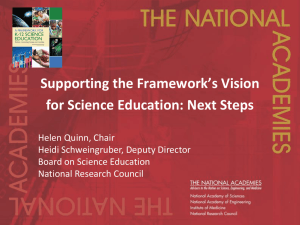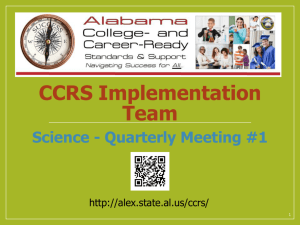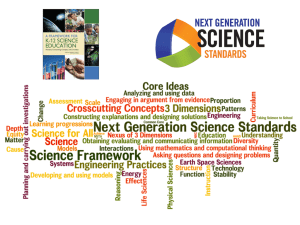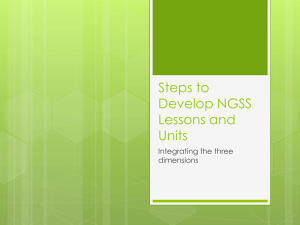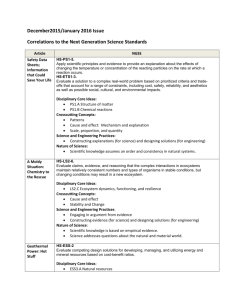NGSS Preview Presentation
advertisement
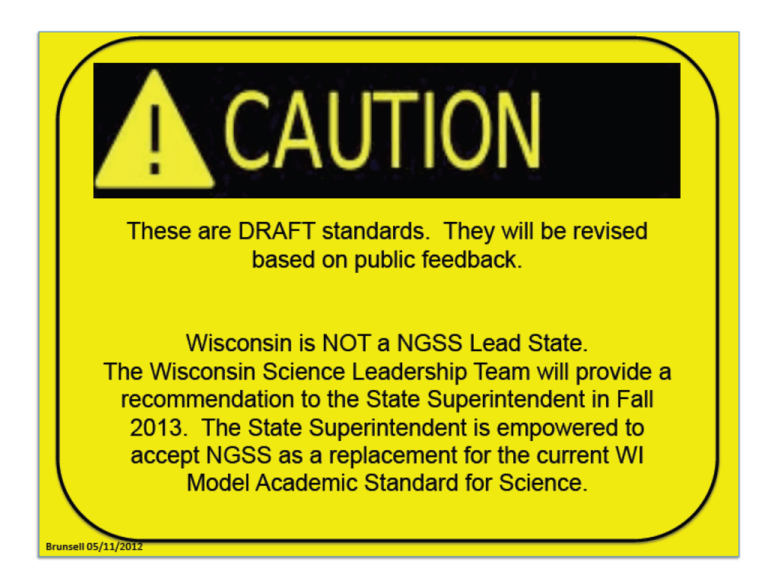
Introductory Video Principles of the Framework • Children are born investigators • Understanding builds over time • Science and Engineering require both knowledge and practice • Connecting to students’ interests and experiences is essential • Focusing on core ideas and practices • Promoting equity Science and Engineering Practices 1. Asking questions and defining problems 2. Developing and using models 3. Planning and carrying out investigations 4. Analyzing and interpreting data 5. Using mathematics and computational thinking 6. Constructing explanations and designing solutions 7. Engaging in argument from evidence 8. Obtaining, evaluating, and communicating information Framework p.41 Crosscutting Concepts 1. Patterns 2. Cause and effect 3. Scale, proportion, and quantity 4. Systems and system models 5. Energy and matter 6. Structure and function 7. Stability and change Framework 4-1 Disciplinary Core Ideas A core idea for K-12 science instruction is a scientific idea that: • Has broad importance across multiple science or engineering disciplines or is a key organizing concept of a single discipline • Provides a key tool for understanding or investigating more complex ideas and solving problems • Relates to the interests and life experiences of students or can be connected to societal or personal concerns that require scientific or technical knowledge • Is teachable and learnable over multiple grades at increasing levels of depth and sophistication Disciplinary Core Ideas: Physical Sciences • PS1 Matter and its interactions • PS2 Motion and stability: Forces and interactions • PS3 Energy • PS4 Waves and their applications in technologies for information transfer Disciplinary Core Ideas: Life Sciences • LS1 From molecules to organisms: Structures and processes • LS2 Ecosystems: Interactions, energy, and dynamics • LS3 Heredity: Inheritance and variation of traits • LS4 Biological evolution: Unity and diversity Disciplinary Core Ideas: Earth and Space Sciences • ESS1 Earth’s place in the universe • ESS2 Earth’s systems • ESS3 Earth and human activity Disciplinary Core Ideas: Engineering, Technology and Applications of Science •ETS1 Engineering design •ETS2 Links among engineering, technology, science and society What are the NGSS? NGSS Are: • Performance Expectations focused on the nexus of the three dimensions of science learning • Performance Expectations that require students demonstrate proficiency • Designed to lead to a coherent understanding of the Practices, CCC, and DCIs NGSS Are NOT: • Separate sets of isolated inquiry and content standards • Curriculum or instructional tasks, experiences or materials. • Meant to limit the use of Practices or Crosscutting Concepts in instruction • Designed to be separate or isolated experiences Organization of the NGSS K-5 • Grade By Grade • Engineering are integrated into performance expectations 6-8 • Grade Banded • Model Pathways will be provided 9-12 • Grade Banded • Model Pathways will be provided Web Delivery of the NGSS All Standards are sortable by • Topic • Discipline • Disciplinary Core Idea • Science and Engineering Practice • Crosscutting Concept • Grade Level/Band Shifts in the NGSS 1. Standards as Performance Expectations reflecting the nexus between Science and Engineering Practice, Crosscutting Concepts, and Disciplinary Core Ideas 2. Science and Engineering Practices and Crosscutting Concepts are continuums 3. Particular practices and/or crosscutting concepts emphasized for clarity and assessment purposes 4. Science concepts build coherently across K-12 5. Greater focus on deeper understanding and application of less content as opposed to memorization of scientific facts and details 6. Integration of science and engineering 7. Coordination with Common Core State Standards See handout “How to Read the Next Generation Science Standards (NGSS)” Show video Science and Engineering Practices Matrix • Engaging K-12 and higher education • New definition required • Evidence gathering • Policies to support quality implementation (e.g., graduation requirements) • Affects on K-12, higher education, and workforce • State Coalitions • Engaging the business community • Communications strategy College and Career Readiness NGSS Support Science Education Policies Adoption and Implementation Planning • Supporting states in planning for adoption • Supporting states in planning for implementation Wisconsin’s Survey The survey was developed by the Science Leadership Team and hosted by UW-Stout and can be found at: https://uwstout.qualtrics.com/SE/?SID=SV_8IE MIuZCqmY84DO
